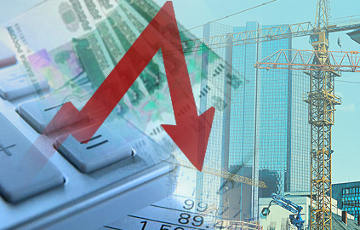
Customers and depositors take a significant percentage of funds out of their accounts.
The probability of a systemic banking crisis is growing in Russia, experts of the analytical center CMACP, which is close to the authorities, have warned. By such a crisis they mean that at least one of three conditions is met: the share of troubled assets exceeds 10% of the banking system’s assets; a “raid on banks” – customers and depositors withdraw a significant share of funds from their accounts; forced reorganization of a significant (more than 10%) part of banks or large-scale (more than 2% of GDP) additional capitalization of banks (to prevent collapse), writes The Moscow Times.
To provide an early warning of the threat of a crisis, the CMACP has developed several indicators of a systemic banking crisis. So far, none of the conditions for a systemic banking crisis has been met, but many things point to its high probability, the CMACP experts write. Therefore, their attention is focused not even on the behavior of the leading indicator of the crisis, but on the behavior of the leading indicator of its continuation.
CMACP calls the current situation a “resonance” of several negative signals and trends indicating the strengthening of macrofinancial risks. These are the growth of bad and bad debts of banks, the recent signal of a high risk of “fleeing depositors”, as well as the strengthening of signals about the risks of a protracted systemic banking crisis and the emergence and subsequent prolongation of recession in the Russian economy. These signals are still weak and the level of risks is still assessed as low, but they are slowly but surely intensifying. CMACP mainly attributes this to tight monetary policy in Russia and instability in global markets.
Central Bank recognizes that tight policies are worsening the financial position of Russian companies and reducing the quality of the corporate loan portfolio, while its measures to restrict retail lending combined with high interest rates are leading to a growing share of bad debts among the population. Old loans are deteriorating and fewer new ones are being issued. In its recent Financial Stability Review, the regulator lists credit risk on companies and high exposure of citizens among the main vulnerabilities (six in total). It notes the rising cost of risk (reserve-to-portfolio ratio) in corporate lending and deteriorating debt service in retail lending. With the latter, in particular, faced the two largest banks, Sber and VTB, draws the attention of CMACP.
A growing demand for restructuring, notes CMACP and recognizes the Central Bank. The regulator recorded a surge of restructurings in March – early April: 2.3 trillion rubles. But then their volume dropped threefold, an operational survey of the largest banks showed. The heads of Sberbank and VTB German Gref and Andrey Kostin allowed the growth of debt problems of Russian companies due to high rates (Gref – defaults, Kostin – restructurings). The Central Bank, to avoid mass bankruptcies, recently asked banks to meet restructuring requests by the end of the year, if possible, and made them indulgences on provisioning for loans restructured from July 2024.
The Central Bank does not consider the problems dangerous. According to its data, at the end of April the share of bad debts in the corporate portfolio of banks amounted to 4% (it is stable at this level), in the retail portfolio – 5.5% (it is steadily growing). At the same time, banks have formed sufficient reserves for such debts – 72% for corporate and 87% for retail, as well as accumulated a sufficient capital buffer. In retail lending it amounted to Rb 1.3 trillion at the end of March. Since April, banks have begun to accumulate a buffer on loans to the largest borrower companies: the Central Bank has tightened the terms of their lending.
The majority of companies and industries (except for coal) are coping normally with high rates, says the regulator, while allowing bankruptcy of some companies, including among the largest. According to its estimates, 13 out of 78 largest corporations have profits less than interest payments. However, in his opinion, there is no question of systemic risk. According to the assessment of the rating agency ACRA, loans amounting to 20% of the banking system’s capital, or Rb 3.7 trillion, may become problematic this year. At the end of April, bad debts on banks’ balance sheets amounted to 5.2 trillion rubles (corporate – 3.2 trillion rubles, retail – 2 trillion). Together, this is less than 5% of the banking system’s assets, which amounted to almost Rb 200 trillion by the beginning of May.
The slowdown in growth or even a decline in the loan portfolio is not critical, the Central Bank believes. For example, the share of bad retail loans has noticeably increased, but it used to be much higher – for example, in 2014-2016. Just then – in late 2014 – early 2015 – there was one of the systemic banking crises predicted by the leading indicator of the CMACP.








